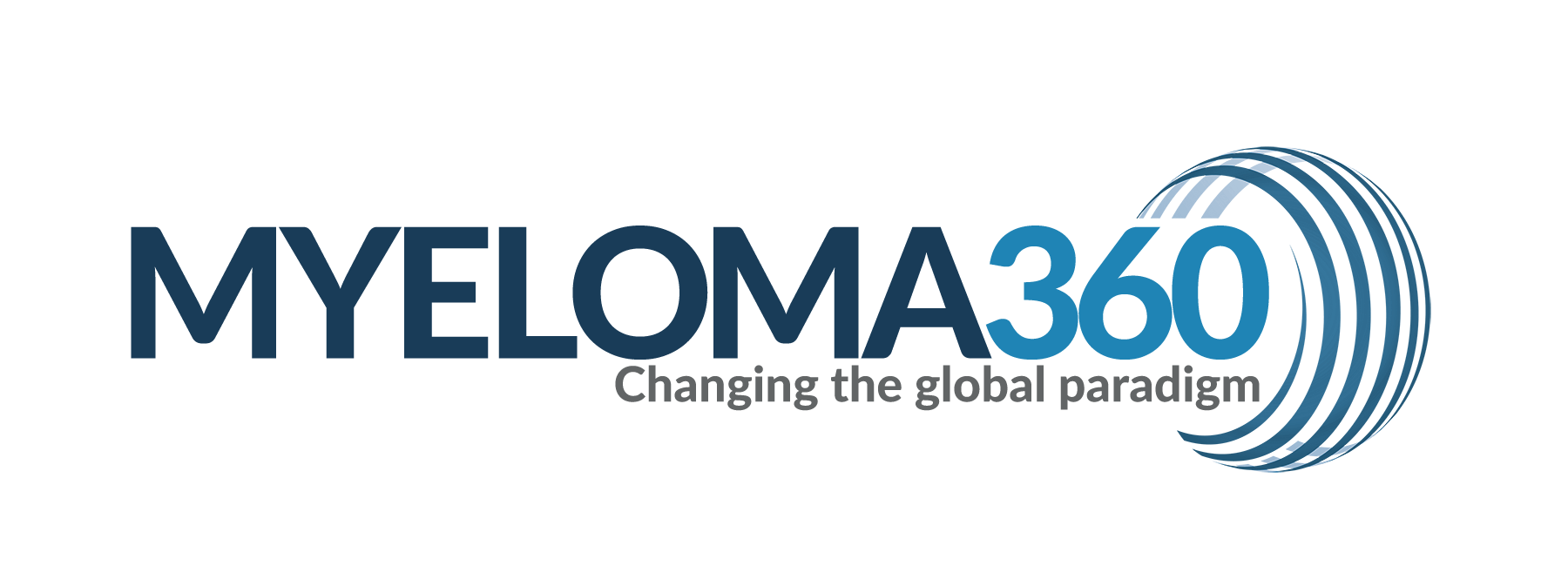Source: Multiple Myeloma – ASH Clinical News
The addition of the anti-SLAMF7 antibody elotuzumab to lenalidomide, bortezomib, and dexamethasone (RVd) induction and maintenance did not improve outcomes for patients with previously untreated high-risk multiple myeloma (MM), according to results from the phase II SWOG-1211 trial. Although the study failed to meet its primary endpoint of improved progression-free survival (PFS), researchers noted that PFS exceeded initial statistical assumptions in the elotuzumab and RVd combination group, as well as the RVd-alone group, suggesting that continuous proteasome inhibitors with immunomodulatory drug combination maintenance therapy could be a mainstay for these patients.
“SWOG-1211 is the first enrichment design trial focused on high-risk patients, but there are several novel strategies being explored for high-risk myeloma that incorporate monoclonal antibody and immune-based therapies,” said corresponding study author Saad Usmani, MD, of Levine Cancer Institute at Atrium Health in Charlotte, North Carolina. “The evidence for optimal management of high-risk myeloma is very limited because these patients have historically made up a small subset of ‘all-comers’ design clinical trials in the past.”
The randomized, phase II SWOG-1211 study randomized 100 patients with newly diagnosed high-risk MM to receive either RVd alone (n=52) or RVd plus elotuzumab (n=48); both arms included an RVd induction and maintenance phase.
The RVd induction regimen comprised eight 21-day cycles of lenalidomide 25 mg, on days one through 14; bortezomib 1.3 mg/m2 on days one, four, eight, and 11; and dexamethasone 20 mg on days one, two, four, five, eight, nine, 11, and 12. The dose-attenuated RVd maintenance phase consisted of 28-day cycles of bortezomib 1 mg/m2 on days one, eight, and 15; lenalidomide 15 mg orally on days one through 21; and dexamethasone 12 mg orally on days one, eight, and 15.
Elotuzumab 10 mg/kg was given on days one, eight, and 15 for cycles one and two, on days one and 11 for cycles three through eight, and on days one and 15 during maintenance.
The median age of the patients in the study was 64 years. Approximately 75% of patients presented with International Staging System stage II or III disease. Regarding high-risk disease features, 47% of patients had amp1q21, 37% had del17p, 11% had t(14;16), 9% had high-risk gene expression profiling, 7% had primary plasma cell leukemia, 5% had t(14;20), and 4% had elevated serum lactate dehydrogenase (LDH). A total of 17% of patients presented with two or more high-risk features.
After a median follow-up of 53 months, there was no difference in the median PFS between the RVd and RVd plus elotuzumab arms: 33.64 vs. 31.47 months, respectively (hazard ratio [HR] = 0.968; p=0.45). The authors added that an exploratory analysis evaluating PFS outcomes for the different high-risk disease subsets revealed no statistically significant differences between the treatment groups.
Similarly, there was no difference in median overall survival (OS; not reached in the RVd group and 68 months in the RVd-elotuzumab group; HR=1.279; p=0.48). Again, an exploratory analysis revealed no statistically significant differences in OS according to different high-risk categories.
There was no statistically significant difference in the incidence of grade ≥3 adverse events (AEs) between the RVd and RVd-elotuzumab groups, though incidence was numerically higher in the RVd group (77% vs. 71%). “The safety profile was as expected for the RVd regimen for the most part,” the authors reported.
However, the researchers reported a few “notable” AEs, including grade 3 to 5 infections (8% with RVd and 17% with RVd-elotuzumab group), sensory neuropathy (8% and 13%), and motor neuropathy (2% and 8%).
There was one treatment-related death in the RVd-elotuzumab group but none in the RVd group. One grade 5 AE was reported in the RVd-elotuzumab group, which was associated with multiorgan failure and underlying MM, which the investigator listed as possibly related to study treatment.
“The SWOG-1211 data support the role for maintenance therapy with a continuous proteasome inhibitor and immunomodulatory drug combination for patients with high-risk multiple myeloma,” the authors concluded. “The PFS and OS data from this study will serve as a benchmark for future enrichment design, randomized trials for high-risk multiple myeloma.”
A limitation of the study included the small number of patients.
Study authors report relationships with Bristol Myers Squibb and Celgene, which sponsored this trial.
Reference
Usmani SZ, Hoering A, Ailawadhi S, et al. Bortezomib, lenalidomide, and dexamethasone with or without elotuzumab in patients with untreated, high-risk multiple myeloma (SWOG-1211): primary analysis of a randomised, phase 2 trial. Lancet Haematol. 2021;8(1):e45-e54.
The post Does Elotuzumab Improve PFS in High-Risk Myeloma? appeared first on ASH Clinical News.

